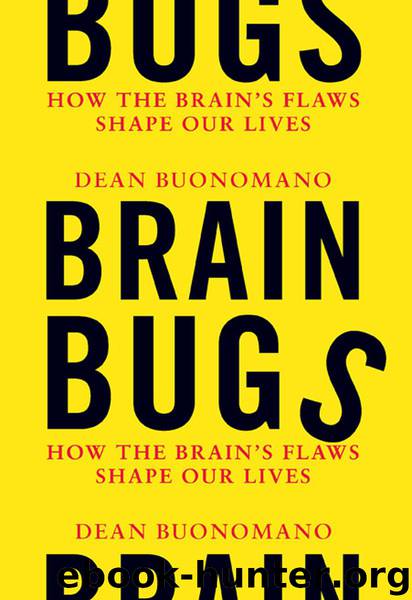Brain Buys by Dean Buonomano

Author:Dean Buonomano
Language: eng
Format: mobi, epub
Publisher: W. W. Norton & Company, Inc.
Published: 2011-02-16T10:00:00+00:00
Only 20 percent of the physicians chose the correct option, C (10%); 14 percent chose option A, 47 percent chose option B, and 19 percent chose option D. So more than half of physicians assumed that there was more than an 80 percent chance that the patient had breast cancer. Gigerenzer points out the undue anxiety that would result from patients’ false belief that their chances of having breast cancer were so high.
Where does the correct answer come from? In a sample of 1000, the great majority of women (990) do not have breast cancer; but because of the 9 percent false-positive rate (which is quite high for a medical test), of these 990 women, 89 (9 percent of 990) women who do not have cancer will have a positive mammogram. That’s a lot of positive tests, particularly because only 10 women (1 percent of 1000) would be expected to have the disease, and of these, 9 to have a positive mammogram. Therefore, there will be a total of 98 positive tests, of which only 9 would truthfully indicate the disease—close to 10 percent. Gigerenzer went on to show that when he expressed the entire scenario in a more naturalistic manner, accuracy improved dramatically. For example, when the conditions were presented in terms of frequencies (statement 1 was reworded to read, “10 out of a population of 1000 women would be expected to have breast cancer”), most physicians (87 percent) choose the correct answer. In other words, the format used to present a problem is of fundamental importance. Gigerenzer argues that our awkward relationship with probability theory is not necessarily rooted in poor reasoning skills, but is because probabilities are not often encountered in ecologically realistic settings and thus do not represent a natural input format for the brain. Nevertheless, the fact remains: we are inept at making probability judgments.
NEUROSCIENCE OF BIASES
Now that we have sampled from a selection of cognitive biases, we can ask the question psychologists and economists have been asking for decades, and philosophers have been pondering for centuries, Are humans predominantly rational or irrational beings? In this oversimplified form, the question makes as much sense as asking whether humans are violent or peaceful creatures. We are both violent and peaceful, and rational and irrational. But why? How is it that on the one hand we have made it to the moon and back, cracked atoms, and uncoiled the mysteries of life itself; yet, on the other hand, we allow our decisions to be influenced by arbitrary and irrelevant factors and are inherently ill-equipped to decide whether we should switch doors in a game show? One answer to this paradox is that many of the tasks the brain performs are not accomplished by a single dedicated system but by the interplay between multiple systems—so our decisions are the beneficiaries, and victims, of the brain’s internal committee work.
Find the oddball (unique) item, in each of the panels in Figure 6.2 as quickly as possible.
Download
This site does not store any files on its server. We only index and link to content provided by other sites. Please contact the content providers to delete copyright contents if any and email us, we'll remove relevant links or contents immediately.
Unwinding Anxiety by Judson Brewer(72774)
The Art of Coaching by Elena Aguilar(52948)
The Fast Metabolism Diet Cookbook by Haylie Pomroy(21066)
Rewire Your Anxious Brain by Catherine M. Pittman(18553)
Healthy Aging For Dummies by Brent Agin & Sharon Perkins RN(16999)
Talking to Strangers by Malcolm Gladwell(13222)
The Art of Thinking Clearly by Rolf Dobelli(10224)
Mindhunter: Inside the FBI's Elite Serial Crime Unit by John E. Douglas & Mark Olshaker(9203)
Crazy Rich Asians by Kevin Kwan(9168)
The Compound Effect by Darren Hardy(8810)
Tools of Titans by Timothy Ferriss(8218)
Periodization Training for Sports by Tudor Bompa(8170)
Becoming Supernatural by Dr. Joe Dispenza(8119)
Wonder by R. J. Palacio(8010)
Crystal Healing for Women by Mariah K. Lyons(7855)
Bodyweight Strength Training by Jay Cardiello(7842)
Therapeutic Modalities for Musculoskeletal Injuries, 4E by Craig R. Denegar & Ethan Saliba & Susan Saliba(7689)
Change Your Questions, Change Your Life by Marilee Adams(7635)
Nudge - Improving Decisions about Health, Wealth, and Happiness by Thaler Sunstein(7615)
